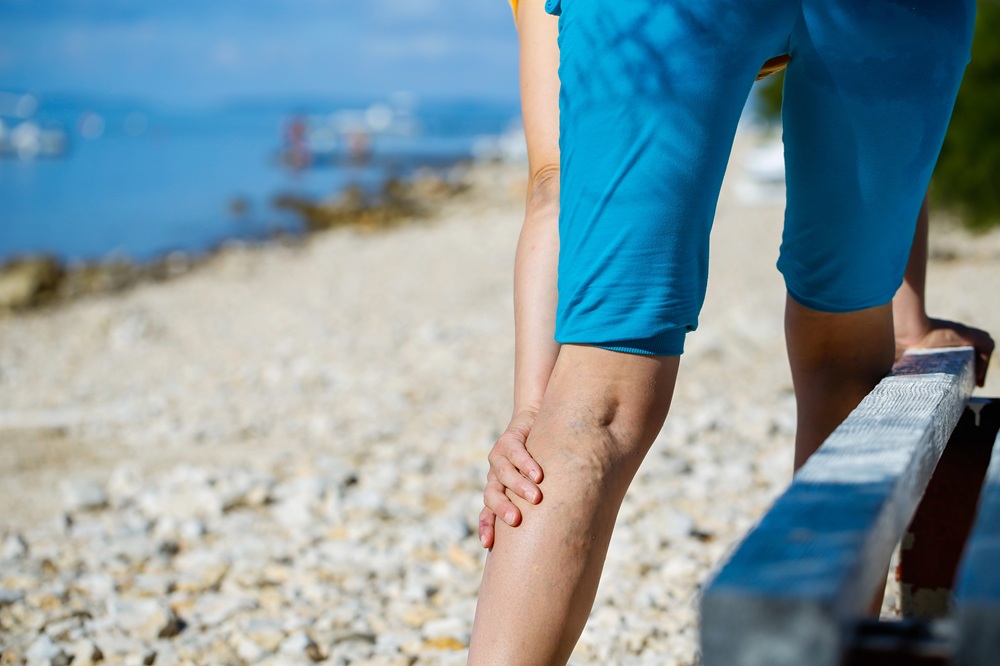You know that heavy, dragging feeling in your legs at the end of the day? Maybe there’s a hint of throbbing, or your ankles seem puffier than they used to be. Then one day, you spot them — those blue, twisty, not-so-welcome visitors creeping along your calves. Varicose veins.
If you’re a woman dealing with them, first off — you’re not imagining it. And you’re definitely not alone.
Let’s Talk Veins — and Why They’re Picking on Women
Here’s the thing: varicose veins show up in both men and women, but women get them far more often. Like, twice as often. Why? Well, in a word — hormones.
Estrogen and progesterone (yes, the same culprits responsible for everything from mood swings to period bloat) also weaken vein walls and affect the tiny valves that help blood flow upward from your legs. When those valves get a little lazy or weak, blood starts pooling where it shouldn’t. Over time, that pressure builds, and boom — varicose veins.
But hormones don’t work alone. Pregnancy throws in a triple threat: more blood in your body, more pressure from your growing uterus on the large vein (the inferior vena cava), and another surge of — you guessed it — hormones. That’s why so many women first notice varicose veins during or right after pregnancy. And, cruelly enough, the more pregnancies you’ve had, the greater the risk.
Oh, and if your mom or grandma had them? There’s a solid chance you’re genetically wired for it too.
If that sounds all too familiar, the good news is that safe, effective varicose vein treatment is available, and it’s not just about looks — it’s about feeling comfortable in your own body again.
It’s Not Just an “Older Woman” Thing
Let’s clear something up: varicose veins aren’t reserved for your grandmother. Plenty of women in their 20s and 30s start noticing them, especially if they’re on their feet all day (hello, nurses, teachers, hairstylists) or frequently wear heels that throw off their posture and circulation.
Being overweight can increase your risk too — not just because of the added pressure on your veins, but because it can mask the symptoms until things get worse.
And while we’re at it, let’s not forget the role of tight clothes. Yes, compression leggings have their place, but ultra-tight skinny jeans? Not doing your veins any favors if they’re constricting blood flow.
What’s Actually Happening Under the Skin?
Picture your veins like a series of one-way streets. Blood’s supposed to flow up from your legs toward your heart. Tiny valves along the way open to let it through and then close to stop it from going backward. But when those valves weaken, blood starts slipping back down, especially when you’re standing or sitting for long stretches. That backward flow increases pressure in your veins, causing them to swell, twist, and push up against the skin.
And why the legs? Gravity’s kind of a jerk like that. Your legs are the farthest point from your heart and constantly fighting against the pull of gravity to keep blood moving up.
But Wait — No Pain, No Problem? Not Exactly
Here’s something that throws a lot of people off: varicose veins don’t always hurt. Some women have the visible bulging but feel perfectly fine. Others have heavy, aching legs with no visible signs at all. Symptoms can include itching, burning, cramping at night, or even just a general tired feeling in the legs.
And while many see them as a cosmetic nuisance, untreated varicose veins can eventually lead to more serious problems — like skin discoloration, ulcers, or deep vein issues. So yeah, they’re not just “ugly veins.”
Hormones, Again? Always
For some women, symptoms flare up right around their menstrual cycle. That’s no coincidence. Estrogen and progesterone fluctuate throughout the month, and those shifts can make vein walls more relaxed — meaning valves don’t work as efficiently. The same goes for women on birth control or hormone replacement therapy. And let’s be honest, our hormones are pretty much the puppeteers behind the curtain.
Pregnancy: The Vein Gauntlet
Pregnancy deserves its own section. Between the increased blood volume (almost 50% more!), the growing uterus pressing against veins, and the extra weight, it’s a perfect storm. Add to that the hormonal relaxation of your vein walls, and you’ve got a prime setup for varicose veins to bloom.
They usually show up in the second or third trimester and can worsen with each pregnancy. But here’s some hope: for many women, they improve after delivery. Still, they may not disappear entirely, and if you’re planning more kids, they might just bring friends next time.
Can You Do Anything About It? Yep
While you can’t control your genetics or stop gravity (yet), you can help your veins out:
- Move around: Walking boosts circulation. Try not to sit or stand in one position too long.
- Feet up: Elevate your legs when resting — especially after a long day.
- Compression stockings: Not exactly runway-ready, but modern versions are way less frumpy and surprisingly effective.
- Healthy weight and diet: Think anti-inflammatory foods and plenty of fiber.
- Skip the heels (sometimes): Flat shoes help with circulation and vein health.
And if the veins are painful, bulging, or just really bugging you — talk to a vein specialist. Treatments today are miles ahead of the old “vein stripping” days. We’re talking minimally invasive, in-office procedures with short recovery times.
Here’s the Real Takeaway
You’re not being vain. You’re not overreacting. And no, you don’t have to just “deal with it.” Varicose veins are incredibly common among women, but they’re still your body’s way of saying something’s off.
So whether you’re managing mild symptoms or looking into treatment, remember: your comfort, confidence, and health all matter. You deserve to feel good in your own skin — and your own legs.

